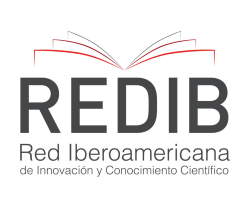Evaluación del porcentaje de micorrización en pinus pseudostrobus lindl establecido en áreas degradadas adicionando carbón vegetal
Resumen
Los hábitats forestales muestran cambios significativos en sus funciones como ecosistema debido a las alteraciones antropogénicas, causando sequias y deterioro de los suelos forestales, lo cual ha obligado a generar alternativas para rehabilitar y restaurar estas zonas, el uso de micorrizas y planta de la especie ideal pueden generar efectos favorables en su adaptabilidad a superficies degradadas proporcionando un mayor flujo de nutrientes y retención de agua, adicionando carbón vegetal se ha mejorado su productividad y vigorosidad de la planta. En el presente trabajo se estableció un ensayo de 2 tratamientos y un testigo, en áreas deforestadas y degradadas con la especie Pinus pseudostrobus Lindl, empleando carbón vegetal como parte del sustrato y adicionando Suillus granulatus en un tratamiento y (Boletus sp, Amanita sp, y Cantharellus cibarius) en otro, como agentes formadores de ectomicorriza. Durante el experimento se evaluó la sobrevivencia y el porcentaje de micorrización, caracterizándolas morfológicamente. Los resultados obtenidos en el experimento los dos tratamientos muestran que la adición de carbón vegetal tiende a retener mayor humedad a diferencia de las que no se les adiciono, esto hace suponer que tuvo repercusión importante en la sobrevivencia y en el porcentaje de la asociación simbiótica, el tratamiento variedad de hongos con dosis de carbon vegetal ½ muestra mejor respuesta en porcentajes de micorrización 68%, seguido del tratamiento de Suillus granulatus 55.5%, respecto al testigo 26.5%.
Descargas
Citas
Agerer R, Rambold G. 1997. DEEMY-An Information System for Characterization and Determination of Ectomycorrhizae. Institute of Systematic Botany, University of Munich, Menzinger Strasse 67, D-80638 München, GermanyDE.
Barroetaveña C, Bassani VN, Rajchenberg M. 2012. Inoculación micorrícica de Pinus ponderosa en la Patagonia Argentina: colonización de las raíces, descripción de morfotipos y crecimiento de las plantas en vivero. Bosque 33(2): 163-169 DOI: 10.4067/S0717-92002012000200006.
Campbell JL, Sessions J, Smith D, Trippe M. 2018. Potential carbon storage in biochar made from logging residue: Basic principles and Southem Oregon case studies. Plos One 13(9):1-18 DOI: 10.1371/journal.pone.0203475
Chen J, Li S, Liang C, Xu Q, Li Y, Qin H, Fuhrmann JJ. 2017. Response of microbial community structure and function to short-term biochar amendment in an intensively managed bamboo (Phyllostachys praecox) plantation soil: Effect of particle size and addition rate. Science of The Total Environment. 574: 24–33 DOI: 10.1016/j.scitotenv.2016.08.190
Chen G, Wang X, Zhang R. 2019. Decomposition temperature sensitivity of biochar with different stabilities affected by organic carbon fractions and soil microbes. Soil and Tillage Research 186: 322–332. DOI: 10.1016/j.still.2018.11.007
Dai Z, Zhang X, Tang C, Muhammad N, Wu J, Brookes PC, Xu J. 2017. Potential role of biochars in decreasing soil acidification – a critical review. Science of The Total Environment. 581. 601–611. DOI: 10.1016/j.scitotenv.2016.12.169
Escobar S, Rodríguez D. 2019. Estado del arte en la investigación sobre calidad de planta del género Pinus en México. Ciencias Forestales 10(55): 4-38 DOI: 10.29298/rmcf.v10i55.558
Farrell M, Kuhn T, Macdonald L, Maddern T, Murphy D, Hall P, Singh B, Baumann K, Krull E, Baldock J. 2013. Microbial utilisation of biocharderived carbon. Science of The Total Environment. 465. 288–297. DOI: 10.1016 / j.scitotenv.2013.03.090
Fiallos L, Flores L, Duchi N, Flores C, Baño D, Estrada L. 2015. Restauración ecológica del suelo aplicando biochar (carbón vegetal), y su efecto en la producción de Medicago sativa. Ciencia y Agricultura 12(2): 13-20.
Gómez M, Lindig R, Del Val Ek. 2015. Efecto de la sequía en la relación simbiótica entre Pinus pseudostrobus y Pisolithus tinctorius. Botanical Sciences 93(4): 731-740 DOI: 10.17129/botsci.193.
Gómez M, Villegas J, Sáenz C, Lindig R. 2013. Efecto de la micorrización en el establecimiento de Pinus pseudostrobus en cárcavas. Madera y Bosques 19(3): 51-63.
Jeffery S, Abalos D, Prodana M, Bastos A, Van Croenigen JW, Hungate B, Verheijen F. 2017. Biochar boosts tropical but not temperatura crop vields. Environmental. Research Letters 12(5): 12 DOI: 10.1088/1748-9326/aa67bd
Kammann C, Ippolito J, Hagemann N, Borchard N, Cayuela ML, Estavillo JM, Wrage-Mönnig N. 2017. Biochar as a tool to reduce the agricultural greenhouse-gas burden–knowns, unknowns and future research needs. Journal of Environmental. Engineering and Landscape Management. 25(2): 114-139. DOI: 10.3846/16486897.2017.1319375
Kjoller R, Bruns T. 2003. Rhizopogon spore bank communities within and among California pine forests. Mycologia 95(4): 603-613 DOI: 10.2307/3761936
Lehmann J. 2007. Bio-energy in the black. Frontiers in Ecology and the Enviromental 5(7): 381-387. DOI: 10.1890/1540-9295(2007)5[381:BITB]2.0.CO;2
Lehmann J, Gaunt J, Rondon M. 2006. Bio-char sequestration in terrestrial ecosystems-a review. Mitigation and Adaptation Strategies for Global Change 11(2): 403—427 DOI: 10.1007/s11027-005-9006-5
Lehmann J, Joseph S. 2015. Biochar for Enviromental Management: Science, Technology and Implementation. 2 ed. London: Routledge
Li YC, Li YF, Chang SX, Yang YF, Fu SL, Jiang PK, Luo Y, Yang M, Chen ZH, Hu SD, Zhao MX, Liang X, Xu QF, Zhou GM, Zhou JZ. 2018. Biochar reduces soil heterotrophic respiration in a subtropical plantation through increasing soil organic carbon recalcitrancy and decreasing carbon-degrading microbial activity. Soil Biology and Biochemistry 122:173–185. DOI: 10.1016/j.soilbio.2018.04.019
Lone A, Najar G, Ganie M, Sofi J, Ali T. 2015. Biochar for sustainable soil health: A review of prospects and concerns. Pedosphere 25(5): 639-653. DOI: 10.1016/S1002-0160(15)30045-X
Major J, Rondon M, Molina D, Riha S, Lehmann J. 2010. Maize yield and nutrition during 4 years after biochar application to a Colombian savanna oxisol. Plant and Soil 333(1-2): 117-128 DOI: 10.1007/s11104-010-0327-0
Mandal S, Sarkar B, Bolan N, Novak J, Ok YS, Van Zwieten L, Kirknam MB, Choppala G, Spokas K, Naidu R. 2016. Designing advanced biochar products for maximizing greenhouse gas mitigation potential. Critical Reviews in Enviromental Science and Technology 46(17)1367–1401. DOI: 10.1080/10643389.2016.1239975
Novak J, Ippolito J, Lentz R, Spokas K, Bolster C, Sistani K, Trippe K, Phillips C, Jhonson M. 2016. Soil health, crop productivity. Microbial transport, and mine spoil response to biochars. Bioenergy Research 9(2): 454-464 DOI: 10.1007 / s12155-016-9720-8
Novak J, Sigua G, Spokas K, Busscher W, Cantrell K, Watts D, Glaz B, Hunt P. 2015. Plant macro and micronutrient dynamics in a biochar-Amended wetland muck. Water Air and Soil Pollution 226(1): 2228-2237. DOI: 10.1007/s11270-014-2228-y
Pera J, Parladé J. 2005. Inoculación controlada con hongos ectomicorrícicos en la producción de planta destinada a repoblaciones forestales: estado actual en España. Investigación Agraria, Sistemas y Recursos Forestales 14(3): 419-433.
Smith P. 2016. Soil carbon sequestration and biochar as negative emission technologies. Global Change Biology 22(3): 1315–1324. DOI: 10.1111 / gcb.13178
Smith P, Bustamante M, Ahammad H, Clark H, Dong H, Elsiddig EA, et al. 2014. Agriculture, Forestry and Other Land Use (AFOLU). In: Edenhofer, O., Pichs-Madruga, R., Sokona, Y., Farahani, E., Kadner, S., Seyboth, K., et al. (Eds.), Climate Change 2014: Mitigation of Climate Change. Contribution of Working Group III to the Fifth Assessment Report of the Intergovernmental Panel on Climate Change. Cambridge University Press, Cambridge, United Kingdom and New York, NY, USA
Woolf D, Amonette J, Streetperrott F, Lehmann J, Joseph S, 2010. Sustainable biochar to mitigate global climate change. Nature Communications 1(5): 1--9 DOI 10.1038/ncomms1053
Xu N, Tan G, Wang H, Gai X. 2016. Effect of biochar additions to soil on nitrogen leaching, microbial biomass and bacterial community structure. European Journal of Soil Biology 74: 1–8. DOI: 10.1016/j.ejsobi.2016.02.004
Zhao L, Cao X, Masek O, Zimmerman A. 2013. Heterogeneity of biochars properties as a function of feedstock Sources and production temperatures. Journal of Hazardous Material 256: 1-7.
Derechos de autor 2023 Carlos Cuevas-Suárez;Anahí Atanasio Osorio;Cesar E Martínez-Maldonado;Lilia Ortiz-Rodríguez

Esta obra está bajo licencia internacional Creative Commons Reconocimiento 4.0.













.png)




















.png)
1.png)


